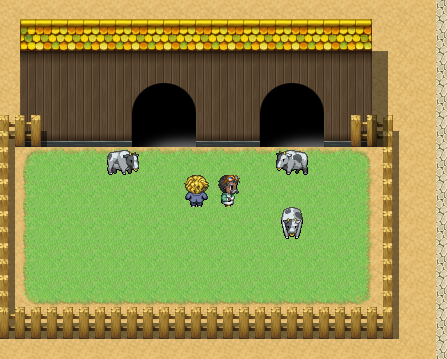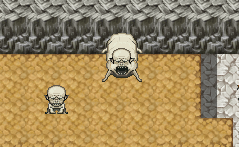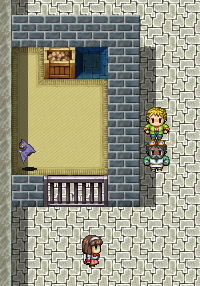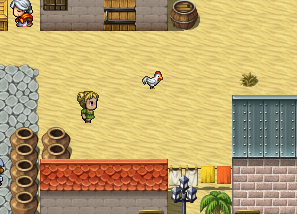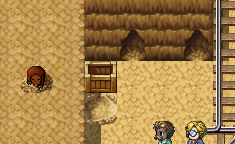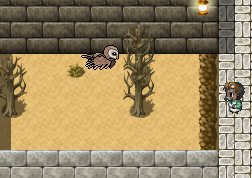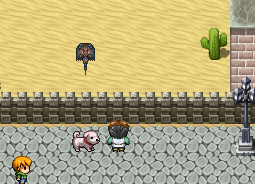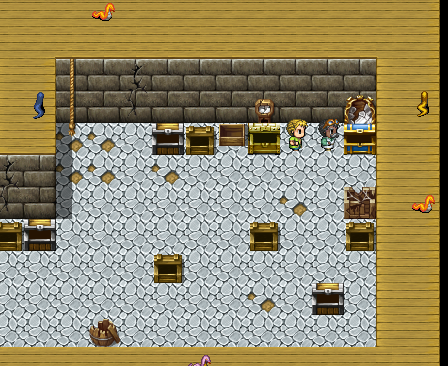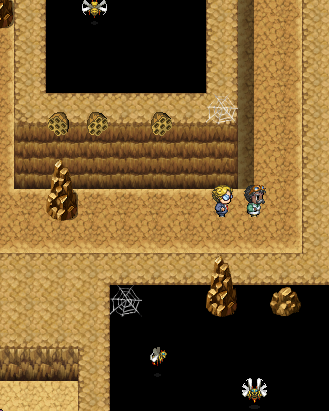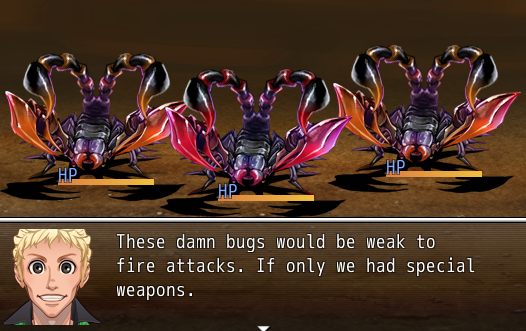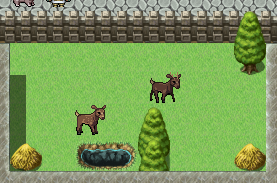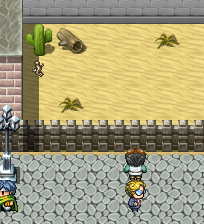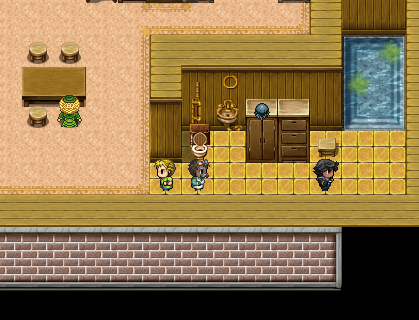Intro
Wild Araz has you, as a humble Zoo Hobo living in the basement, ascend to becoming one of the most skilled Zoo Animal catchers in Antiford as you travel all around the Istoki Desert looking for local creatures to bring in the locals and the tourists alike.
Along the way, not only will you see staples of Antiford like the Shield Bat and the Skuttlekovy, but we’ll meet some newer, less talked about critters like the Desert Hornet and the Prushian Mole. This small guide is to bring to light the kinds of Animals you can expect to see and find in Wild Araz, but also to shed some light on the wildlife found in our desert many people overlook for Ferocious Goblins and twin-tailed Scorpions.
Disclosure- Items found within subject to change. Not necessarily cannon. For cannon Animal facts please see the Encyclopedia or talk with an expert.

Shield Bat
Shield Bats are a delightful staple of Istoki Nightlife. Originating in abandoned Goblin Caves, Caves in the Hoganmar Mountain range, and (more recently) Attics and Abandoned Houses of humans, they descend into the Desert at night. These silent fliers hunt insects and small rodents, expertly cutting down Scorpions, Hornets, and sand worms.
Shield Bats have made themselves a small nuisance in attics of houses and taller buildings, but farmers welcome them to keep away Voro Locusts. Enterprising young men have even taken to catching and training small groups of bats and take them around Whitehaven to destroy Voro Locust populations in hopes they don’t become dangerous.
Denizens
Denizens are a fat form of arazian pheasant which was easily domesticated by humans. Vibranni and Yeti never considered domesticating the bird due to its low meat capacity and its high upkeep in harsher climates, preferring Chanka instead, however settlers in the Antiford and Prush areas quickly saw the value in an easily domesticated animal with such a high velocity of laying edible eggs. Calling them ‘Denizens’ for their abundance in the colonized areas, the wild population was quickly hunted or domesticated out of existence and left only the domesticated species behind.
Now a world-wide trade. Their meat and eggs are a staple in Arazian dishes and feed many Arazian countries. Thanks to Paorrean rice farming practices, they are easily fed and drink little water which makes them an easily maintained food source among lower income communities.
Prushian Moles
Also known as Istoki moles, these digging mammals are found in areas of middle Araz from the Istoki Desert all throughout the Prushian Countries. They use their large, strong claws to dig through the game eating a variety of insects. Although they do eat sand worms, the toxins inside can make them ill, or kill a gluttonous mole that eats too many.
At one point their population was almost completely driven out of Antiford between a boom in Goblin population and human affect on their habitat. However, they have experienced a new population surge in mining towns around the Prodigious canyon in Antiford due to human influence on Goblin population.
Desert Burrowing Owl
The Desert Burrowing Owl lives in derelict ships, old dens of many animals, abandoned Goblin Caves, and hollowed out Cacti. They hunt mostly at night, feeding on Scorpions, small Chanka, bats, small rodents, and desert tarantula. They often hang around Goblin territory, picking off prey as they escape a new hive or escape the clutches of a Goblin.
The Desert Owl has fantastic eyesight, and are known to seek out travelers in the desert. Some wise desert dwellers will keep an eye on them for signs of danger, and follow them to water sources.
Skuttlekovy
Skuttlekovy are the masters of desert survival. Having a deadly venom in their systems since birth, their only prey to animals who can handle the toxins (and humans and Vibranni). Skuttlekovy, although extremely venomous, they are mostly scavengers eating dead or wounded prey they happen upon. Their main diet are sand worms, but they have been known to cannibalize dying members of their herd or outside Skuttlekovy wandering into their territory.
Although a Goblin group can get large enough to overtake a Skuttlekovy, they often coexist with little incident as the Skuttlekovy can effectively defend itself. When an incident does occur, it’s common for many Goblins to perish at the discretion of a single Skuttlekovy. Since Skuttlekovy are rarely Cave Dwellers, though, Goblin Hives have been left relatively safe from their influence.
Demon Tailed Snake
Despite its name, these snakes don’t differ from other species found on Orr. The heat of the Istoki Desert and surrounding badlands is perfect for these reptiles. Although Venomous, they are only a danger to humans at large sizes, as mostly their venom is used on their prey of insects, rodents, desert birds, and young desert pangolin.
Similarly to many species in Araz, they benefit from a long life span and growing to large sizes the longer they live. However, since they live in group settings, it is common for a larger snake to become docile and breed, eventually being cannibalized by other snakes. Due to their size and nature, they are also prey for many animals in the desert. Due to human interaction, their populations have been pushed West in the Istoki Desert and the Prushian countries. This has damaged their food supply and lowered their rung in the food chain due to the introduction of newer and more dangerous predators (like Prodigious Eagles and Goblins).
Desert Hornet
Not much is known about the deadly desert Hornet besides that they are avid hunters of Scorpions and in greater numbers they are extremely deadly. Although they lay their eggs in insects like young Skuttlekovy or Arazian Scorpions they are drawn back to the hive of their lineage where they live, collect food, and build. Unlike bees and other Hornets, the Desert Hornets lack a queen, so all it would take is a single pregnant Hornet to rebuild an entire hive.
In the event of a Hive destruction, disease, or food shortage, hives are capable of moving in a swarm. On two occasions White Haven dwellers have recorded instances of a swarm taking over and overwhelming Goblin hives, killing off hundreds of Goblins and their queen in the process. This act is speculated to be one of the natural population-control methods of the desert on the Goblin population. They are territorial, but their territory does tend to flourish, giving rise to the hypothesis they partake in bee-like pollinating of local plant life. Such an act could be an effort for the hive to attract prey and hosts for eggs by insuring there’s plenty of plant life and smaller insects for their prey to stay in the area.
Their venom paralyzes instead of poisons, however a swarm of Hornets could be enough stings to send even a full sized yeti into cardiac arrest. Their largest predators are bats and Desert Tarantula who risk being hosts to their eggs, but can often sustain large populations with web-ensnared Hornets.
Camels
Camels are similar to Camels on Earth, only they are not as wildly domesticated. Although it is believed Red and Yellow tribe Vibranni used them for long voyages in ancient times, they are rarely used as travel animals due to their stubbornness and dislike of carts. They are sturdy pack animals, though, and are capable of retaining water and endurance for long instances of time.
Wild Camel in the Istoki have migrated far out beyond human reach. They are known to be nomadic, often migrating on a “track” of small oasis in the desert. Although their speed can keep them safe from Goblins, it is also not unheard of for an entire pack of Camels to be overtaken by a hive of Goblins should they stray too close.
Cannonball Beetle
These beetles live deep underground or in the colder spots of the Hoganmar Mountain Range. They have a defining feature of having a tough carapace and the ability to curl into a ball. They are daylight active while in colder climates while strictly nocturnal in the Istoki Desert.
They mainly eat mushrooms and plants where they can find them as well as insect eggs.
Yellow Jackal
The yellow Jackal is a predator from Southern Prushland and further south. These pack hunters get their name from the color of their eyes at night by firelight. Their coat is a shiny black, which helps for night hunts and for hiding their outline in the shadows during the day.
Prushland fur trade dived with the lower population and migration further south. Now with their new industrialization, their population has risen but their habitat has started to shrink.
Regiment Crab
The Regiment Crab is a strange crustacean with many legs. Although it is named a crab, its pincers are almost non-existent and it has ten legs instead of eight. This crustacean is protected by a hard shell, and can bury itself for protection.
They are mainly scavengers but are known to graze on seaweed, moss, and algae. They are rarely on dry land, so this animal was rarely seen for decades after its discovery. It was once believed to be a group of crabs marching in unison and was named after a military regiment marching into battle.
Arazian Scorpion
From the Jungles to the South to Northern Hoganmar Mountain Range, these arachnids are a staple of the Arazian Continent. The older they get, the larger and more aggressive they get. These insects develop their venom by eating Sandworms, Skuttlekovy eggs, or Poisonous Frogs. Because of this, they can have varying toxicity depending on the region.
In the Istoki Desert you’ll find the most venomous of the Scorpions due to all the venomous prey. Their tough carapaces and powerful claws make them the ideal survivor in the dunes and their large population and ability to adapt makes them both the bane of desert life and a much needed food source to all Istoki life.
Shingled Tortoise
The sturdy Tortoise is hanging on to the population by a thread. Once a staple of Istoki life and numerous in the Prushian Countries the rise in population from Goblins and Venomous predators and the introduction of hunting by Human settlers has decimated the population. It’s believed some of these Tortoises to have lived for over two hundred years, with their reproductive cycle being biennial.
They feed on various plants and sometimes insects, like the Voro Locust. Their droppings are immensely fertile for desert flora, and their migration trails are often found to sprout plant life. Modern Day: they are sometimes found in small herds frequenting around, or on their way to, watering holes in the vast desert. Once travelers would follow them to water, but the rise in Skuttlekovy population has many humans avoiding them if seen at a distance.
Mikildyr
The elegant, speedy deer of Kuu is a National icon on the Paorrean Island. It has a resilience to cold matched by few and has the uncanny ability to have twins. Although overshadowed by the Reyfandyr by the locals, Mikildyr are know Paor-wide for their antlers, their pelts, and the abundance of these items.
Desert Tarantula
Although considered solitary hunters, they are known to sometimes nest together. These Tarantula are known to have a den and a hunting ground in which they roam, but they don’t appear to be territorial. These desert creatures are colorful by means of attracting mates and marking their maturity.
Vibranni used to see these as a sign of good luck, as their bright colors are considered a sign of beauty. Vibranni and Humans alike welcome populations of them to help fight off Voro Locust populations.
Salt Lizard
These little Lizards have survived the vast desert with two important things. First, its poisonous mucus covering most of its body, severely poisoning any animal who comes into contact with it, and second, its body’s own ability to conserve and store enough water to sustain it. Just the smell from its slimy skin can keep away many animals, including Goblins.
Vibranni used to lace spear and dagger tips with its poison for a more effective weapon. This practice has become frowned upon, but still appears in the West of Antiford.
Land Octopus
Land Octopus are adorable little creatures who have adapted to survive on land to thrive where their aquatic counterparts have not. Though not a true Octopus, these cephalopods have the customary eight limbs, highly intelligent, and need for a wet environment. Although water is still a large portion of their life, they lack any sort of gills and only breathe through air lungs. Short limbed Land Octopuses are often found as pets, even in Antiford. These imported beauties are expensive to buy and own.
The red capped land Octopus is the only species of land octopus native to Araz, and is found deep in the jungles of the south.

